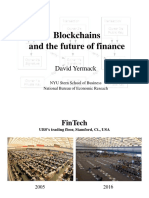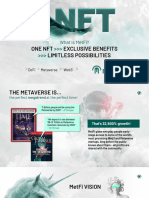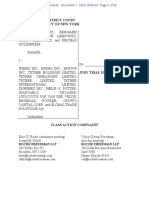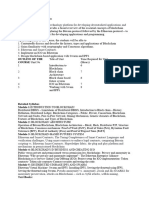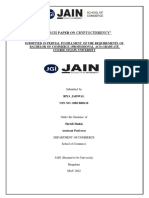0% found this document useful (0 votes)
13 views29 pagesBlockchain Introduction KR
Blockchain is a decentralized technology that serves as the foundation for cryptocurrencies like Bitcoin, addressing inefficiencies in current transaction systems. It enables secure, tamper-evident transactions without intermediaries, making it applicable beyond just digital currencies. Various types of blockchains exist, including public, private, and consortium, each with distinct characteristics and use cases.
Uploaded by
senthilgobi08Copyright
© © All Rights Reserved
We take content rights seriously. If you suspect this is your content, claim it here.
Available Formats
Download as PDF, TXT or read online on Scribd
0% found this document useful (0 votes)
13 views29 pagesBlockchain Introduction KR
Blockchain is a decentralized technology that serves as the foundation for cryptocurrencies like Bitcoin, addressing inefficiencies in current transaction systems. It enables secure, tamper-evident transactions without intermediaries, making it applicable beyond just digital currencies. Various types of blockchains exist, including public, private, and consortium, each with distinct characteristics and use cases.
Uploaded by
senthilgobi08Copyright
© © All Rights Reserved
We take content rights seriously. If you suspect this is your content, claim it here.
Available Formats
Download as PDF, TXT or read online on Scribd
/ 29

















































